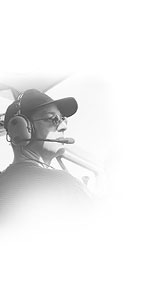Aviation careers last a lifetime, continuing to grow
February 29, 2012, 12:55 pm
The U.S. Navy recently increased aviation career continuation pay for several communities, up to as much as $10,000 more per year. The naval flight officer pay is able to increase as more innovations and higher demand are making these pilots more valuable than ever.
The Navy establishes pay ranges for a variety of pilot and aviation positions in the community as the jobs grow and evolve. If there is an increased demand for a specific type of pilot or aviation community, the Navy will increase this field's pay range to entice more talent to the department, and encourage current workers to stay in the Navy for their career. The Navy also monitors opportunities in the private sector of the aviation industry, and the strength of the overall economy, when determining pay ranges, Navy Times reported.
With the recent increase in pay for several Navy aviation positions, about 310 active-duty officers and 75 full-time support aviators will receive a raise in 2012, the source reported.
Private aviation companies and firms are also working to retain talent to ensure they have a loyal workforce collaborating on innovation and sustainability. Albert Seifert, for example, worked at Boeing's Auburn Fabrication Division through seven decades. Seifert, 91, loved his job, especially building sophisticated tools and equipment to keep the skies safer, the Seattle Times reported.
Another way to keep the skies safe is through investment in pilot insurance.
David Kozy, a research and development engineer and technical fellow at Boeing who worked with Seifert for 20 years, told the source that the dedicated aviation professional started at Boeing in 1942 and worked there until right before he passed away. Seifert worked on a number of planes and parts, including B-17 Flying Fortress bombers, the Times reported.
"He was a master at what he did and made everything he did look easy," Kozy told the source. "There's a big hole at The Boeing Company where Al used to be."
Seifert joined the U.S. Army's 9th Armored Infantry Division in 1944 after working as a machinist at Boeing. He mainly worked as a tool and die maker in the research and development unit at Boeing. Seifert's contributions helped other workers make production parts that could put together portions of the plane during construction. Siefert worked through a period in aviation history when every tool being used seemed to be a new invention on the cutting edge of technology. Companies continue to push for this innovation and excellence today, the Seattle Times reported.
Are you covered? Are you overpaying? Find out! Get a Quote Now!
| 


